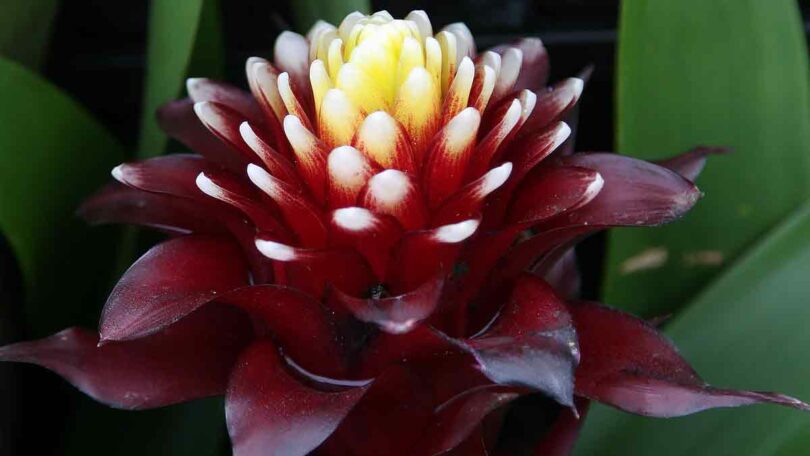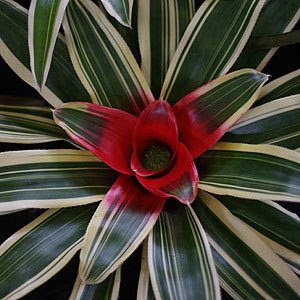Guzmanias are a bromeliad and are a plant suitable as either an indoor or outdoor plant depending on climate. They produce long lasting upright flower spikes or ‘bracts’ with small white or yellow flowers (see picture right)

Relatively easy to care for, Guzmania species such as G. lingulata, G. zamora and G.conifera make most attractive indoor plants although some species are taller growing than other Bromeliads. Flowers of named cultivars such as ‘Gwendolyn’ are colorful and interesting.
Guzmania varieties

- Guzmania ‘Luna’ is a popular variety with a mauve flower spike.
- Guzmania conifera is a fascinating species with its cone like flower. Brilliant orange red held upright over glossy green foliage. G. conifera does require a little humidity and is originally from Peru and Ecuador, long lasting flower is a standout.
- Guzmania lingulata with its brilliant red flower is aptly nicknamed ‘scarlet star’ wisely used as a house plant the flower is ling lasting, excellent indoor plant. Some G.lingulata hybrids have yellow flowers such as G. lingulata ‘hilda’
- Guzmania zamora with its tall brilliant red flowerhead is another excellent plant.
- Guzmania ‘Mirador’ – Yellow with green tips make this an unusual addition to the collection.
How To Grow Guzmania – Basic Care
Originally from the rain forests of South America they like a warm humid environment.
Although these wonderful Bromeliads do perform best warmer climates, they can be grown in cooler zones as long as you provide good conditions and overwinter them indoors.
- Guzmania prefer a well lit or bright position but protected from direct sun, they do well indoors or outdoors when kept under cover in a warm protected position.
- Use a free draining potting mix, such as a Cymbidium Orchid mix, to get these lovely plants to do their best. Like most bromeliads Guzmanias need to have water in the leaves to do well.
- Water regularly when in active growth, Spring through Summer. Water the central rosette with rain water every few days, fill to around 1/3. During colder months water every two weeks.
- Flush out the rosette every 3 weeks.
- Try not to over water.
- Fertilizer is rarely needed, a mist spay with 1/3 strength liquid fertiliser every month should be adequate.
- After flowering the mother plant usually dies, however it will have sent out offsets and these can be removed and potted up.
- Guzmania are said to be non toxic to cats and dogs.
The inflorescence (flower) of the Guzmania is long lasting, however as they do like a warm climate, those in cooler areas could try Nidularium instead.
Other popular Guzmania species include: G. monostachia with its tall spear like flowers and G. musiaca

You may also like
